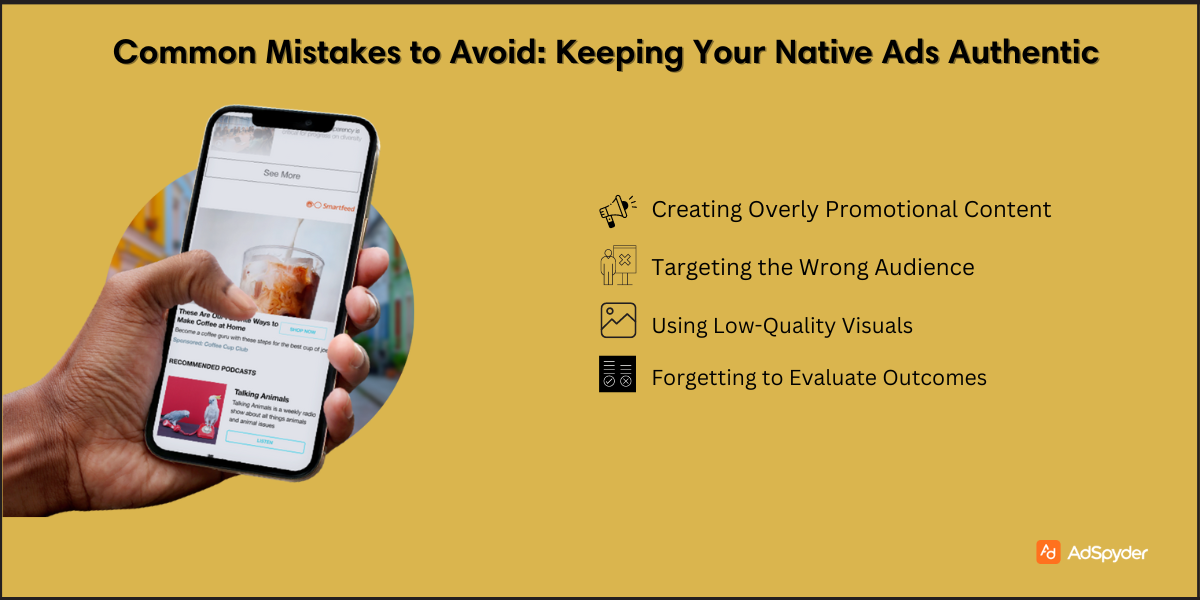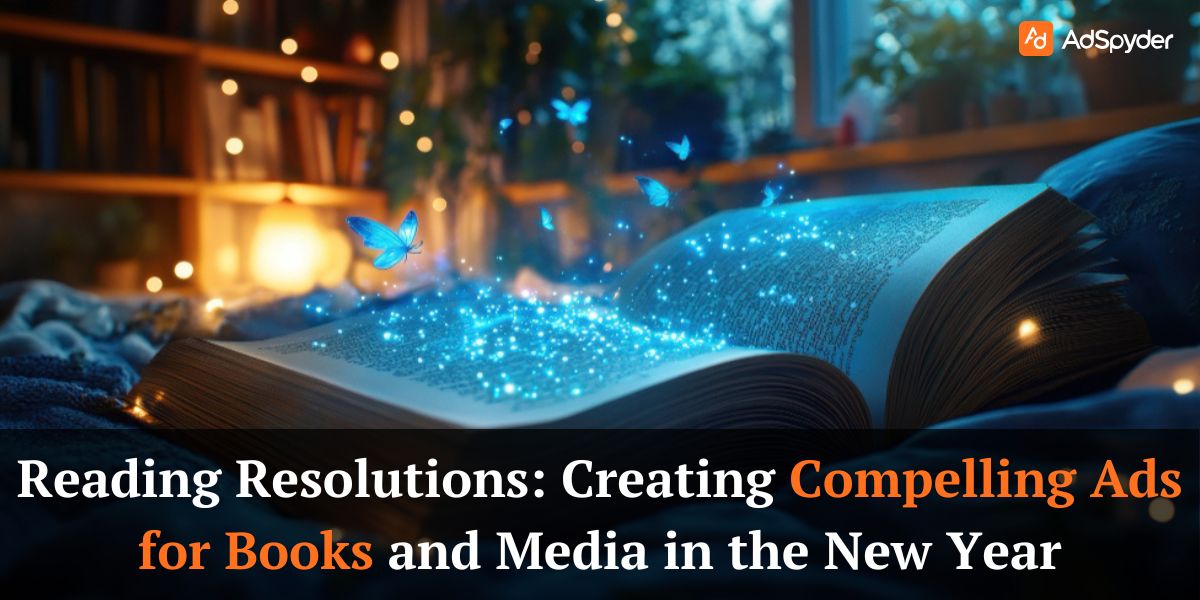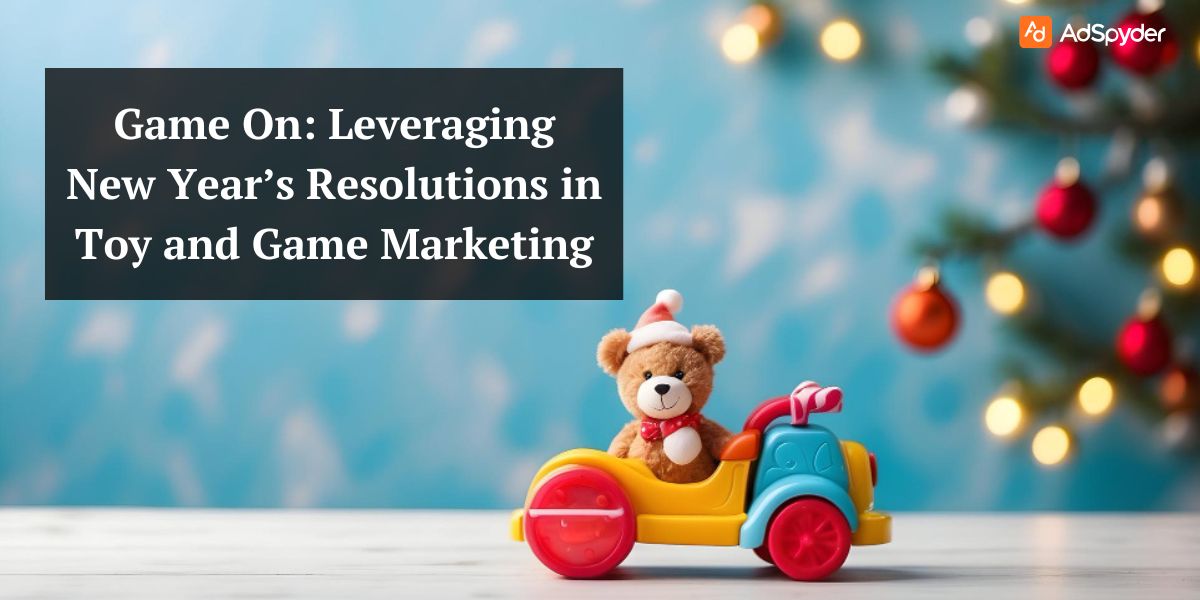Consumers have taken control of their own purchasing decisions, using the internet as their toolkit. This shift presents both a challenge and an opportunity for brands trying to connect with their target audiences amidst the constant demands for attention and engagement. Among the various alternative advertising methods that have emerged, design native ads stands out as a highly effective approach that aligns the interests of both brands and consumers.
Ready to Elevate your Marketing Strategy?
The essence of it lies in creating native advertisements which do not have the tone of traditional advertisements. This means that brands need to think like publishers and aim to create content that will be irresistible to the target audience from the very first sight and, only then, incorporate the intended messages gradually. In this case, design native ads have the potential to attract consumers’ attention and facilitate a call to action without necessarily being perceived as interruptive and invasive.
The Art of Deception (for a Good Cause)
It’s an art of deception, but for a good reason: It’s motivating people to be healthier. Although one might consider the use of the word ‘deception,’ it is worth noting that the mindset behind native ads is to deliver value nonconsciously, bypassing the consumers’ advertising guard. Of course, no brand should ever be outright deceptive, though the strategy of presenting branded content as a mere informative piece or an article that is just like any other available puts its message across in a more appealing manner hence achieving better engagement levels.
The Art of Camouflage: Essential Strategies for Seamless Design Native Ads
Native ads should not be attention-grabbing like traditional display ads but instead, become part of the user experience. This means that the design, format and context of the link should harmonize or should be compatible with the other related contents. For instance, promoted social media posts are designed to look like organic content feeds and recommended content links leverage media sites’ content curation strategies.
In general, native ads can be of any type depending on the ad units, and the purpose remains the same, which is to give brand messages context instead of interrupting.
Content is King (and Queen)
This old saying holds a lot of truth in today’s digital age, especially for the travel industry.
As is evident, visuals and context are very important but the content will always be king when it comes to effective native ads. Sustaining quality content in various forms, be it an article a story, or any number of other formats guarantees relevance and provides tangible value for the intended audiences.
- Informative Articles
This makes it possible to get educational content that will reach the target audience while at the same time passing the intended messages of the brand. For instance, a firm that specializes in the production of athletic apparel can create value by producing fitness advice content.
- Compelling Stories
It is more engaging since it brings out emotion and in a way, when narrating or telling a story it passes on an understanding of the content more flexibly. Customer stories regarding enhancing the value of their products and making people’s lives more exciting can also be seen in numerous cases among the representatives of the outdoor industry. Videos that promote thought leadership can also work well. Telling a brand story as a pioneer of their niche can provide authority to the brand among the audience.
- Interactive Content
Interactive content, such as pre-tested assessments, calculators, competitions, and quizzes, allows for the collection of fun data and generates leads. For instance, an insurance provider can also come up with a risk analysis quiz.
Know Your Platform and Audience
The role of content is more fundamental in helping native ads enhance placements and segment targets.
- Social Media Platforms
In the cases of YouTube ads, Facebook or Instagram, brands can advertise videos. These videos educate society or partner with influencers to encourage viewers.
- Content Discovery Platforms
The text and visual content recommended on platforms like Outbrain can help to take consumers to e-commerce products or services that can meet their needs.
- E-Commerce Ads
Ads that are used in shopping sites, such as Google Display Ads or Amazon Ads are a great candidate for native ads. With non-intrusive ads that can help audiences find the products that they are interested in, native ads can reshape the e-commerce marketing strategies.
Embrace Transparency
Native ads, as part of experiences, must simultaneously remain invisible enoughs. This is to integrate with the content but visible enough that consumers recognize it as an ad and receive proper disclosures. Using sponsor indicators or clear branding, this can be achieved. Lack of recognition of sponsorships causes disenchantment with time hence less trust from the consumers.
Focus on User Benefits, Not Just Features
The best native ads are defined as performing mainly informational and persuading functions in terms of presenting mainly tangible benefits and solving target users’ wants instead of presenting the brand’s features and direct calls to action. For instance, the e-book by Drift about conversational marketing offers its readers advice on how to grow instead of talking about the software it offers.
- Travel Blog Example
For instance, a travel company can deliver value to potential customers through a native ad blog. It can focus on how to plan for a family trip in the national parks taking into account the age and preferences of the children in the family. This gives the targeted group entertaining tips and is at the same time a subtle promotion for the brand’s family traveling planning.
Visual Appeal is Key
In digital media, the user engages with visuals and graphics that convey specific information. Marketers should create ads with engaging visuals, charts, and animations tailored to the specific placements.
- Professional Photography
Real, forceful photographs that reflect the consumer’s life increase the chances of branded content no matter the social media or article side media.
- A/B Test Visuals
Brands can test different visual styles and formats in the same promotion, gradually assessing the results. For instance, the kind of content that involves instruction such as step-by-step videos might do better than images for DIY product content.
Craft a Clear Call to Action (CTA)
Native advertisements are more inclined to offer value-providing content. But they require specific promotional actions. This is to bring about tangible conversions concerning the goals. The brand promotion association makes this the final content to correspond to specific needs and wants.
Write CTAs in a simple, clear imperative tone and keep them brief. Accompany them with a call to action. For instance, the headline could be “Start Your Adventure”, “Sign Up Now,” or “Explore Our Plans. ”
Beyond the Basics: Advanced Strategies for Native Ads Design

The following methods can take native ads to the next level when executed strategically
- Utilize User-Generated Content (UGC)
Including real pictures videos articles or social media shared by the customers makes native ads look genuine and more customer-oriented. Brands should select UGC that depicts real-life experiences that people can relate to or experiences that stir emotions.
- Personalize Your Messaging
Data and testing enable brands to target native ad receivers. This aligns the content of the ads to the users based on their interests. For instance, fitness applications can offer individual routines for users.
- Leverage Influencer Marketing
It is important because the influencers can bring authority and credibility to native ads besides the extension to new channels. For instance, most of the financial blogs contain opinions from different celebrities in the investment field.
- Focus on Long-Term Value
Although conversion is important, native ads design is more of a long-term commitment to invest in the content. This is to consistently engage the potential customers of the business. It also can turn them into loyal consumers via experience.
- Embrace Emerging Technologies
From engaging content to putting the user right into the advertising spot, newer mediums enable innovation to keep native ads relevant over time. The question brands should always be answering is which emerging tech can adapt their strategic plan.
- Measure and Analyze
As with any type of advertising, brands need to incorporate thorough monitoring and evaluation of native ads. This is with an emphasis on the ad layouts, positions, messages, and CTAs in the long-term process.
Common Mistakes to Avoid: Keeping Your Native Ads Design Authentic

On the positive side, native advertising offers a myriad of benefits to brands, but, at the same time, brands can cause negative impacts by failing to maintain the branded content relevant to the audience and its context. Avoid these common pitfalls:
- Creating Overly Promotional Content
It is easier to tamper with strategies that center on product aspects or straightforward promotion as opposed to prioritizing the provision of useful information to the audience. This destabilizes native ad authenticity.
- Neglecting Transparency
Even though native advertising is partially or fully integrated into the platform, it cannot be devoid of sponsor labels to avoid misleading users. This can trigger legal problems or negative brand associations.
- Targeting the Wrong Audience
Failure in targeting customers and placement means low relevance and native ad blindness, especially when a user engages with a lot of irrelevant ads. It will also mean that all brands need a precision target depending on the audience research done and analysis made.
- Using Low-Quality Visuals
Native ads require brand-level visual quality for consumption, which must be achieved to make them engaging. Inexperienced styles or images can reduce the effectiveness and overall quality associated with a brand. This is especially true if you are looking for video marketing to improve brand loyalty, awareness and sales campaigns.
- Forgetting to Evaluate Outcomes
Brands can’t improve native ad strategies over time if they do not have additional tracking and attributive models. This includes isolated tracking and attribution models which compare performance with benchmarks. The company cannot afford to neglect analytics dashboards to monitor since it is obligatory for the enhancement of results.
FAQs
A native ad blends seamlessly with the platform’s content, offering valuable information without feeling disruptive.
Quality content that provides value to the audience makes native ads more engaging and trustworthy.
Engaging visuals and professional photography increase ad effectiveness and audience interaction.
Clear disclosures like sponsor labels help maintain trust by avoiding deception.
Use clear, concise, and action-driven CTAs like “Sign Up Now” to guide users toward conversions.
Native ads harmonize with the platform’s content, providing value without interrupting the user experience.
A/B testing helps identify which visuals and formats perform best, optimizing results.
Conclusion
Native Design Ads is one of the most developing trends with a huge business perspective even now. Acquainted with the meaning of native advertising, applying the strategies mentioned above, and constantly experimenting regarding the methods and materials that are most effective with the target audience, you can reach impressive outcomes. Native advertising can be a reliable weapon to effectively and sustainably reach your audience.
You can learn and get to know how to design effective native ads by reading this blog post. You can incorporate the blog’s suggestions to address your target markets with suitable messages and goals that fit your business. Native advertising is an ongoing process, sort of like a never-ending cart ride. Through these strategies and continuous improvement, any native advertising campaign can remain relevant. It can also produce the best results for the company’s brand.



